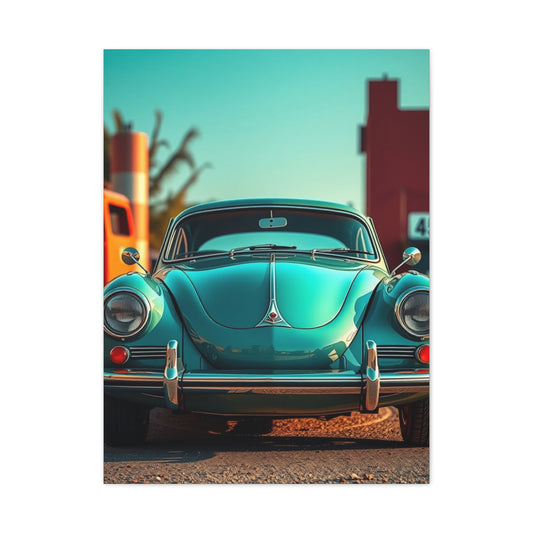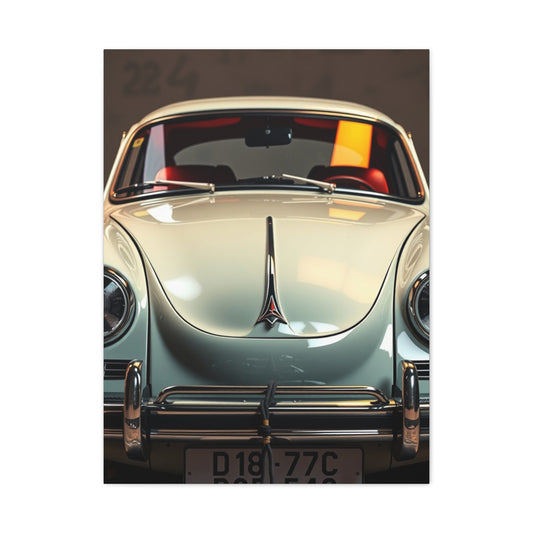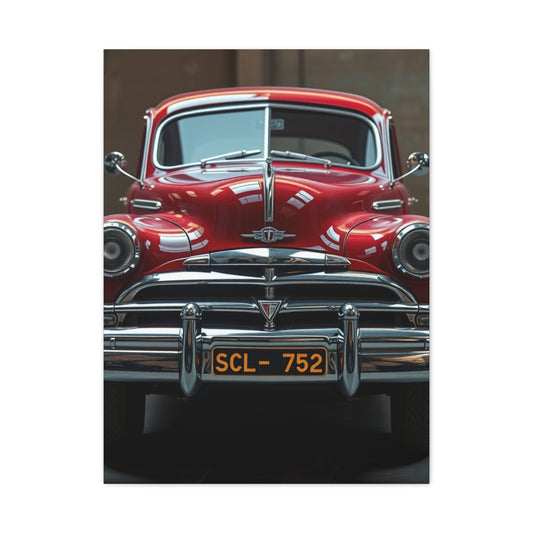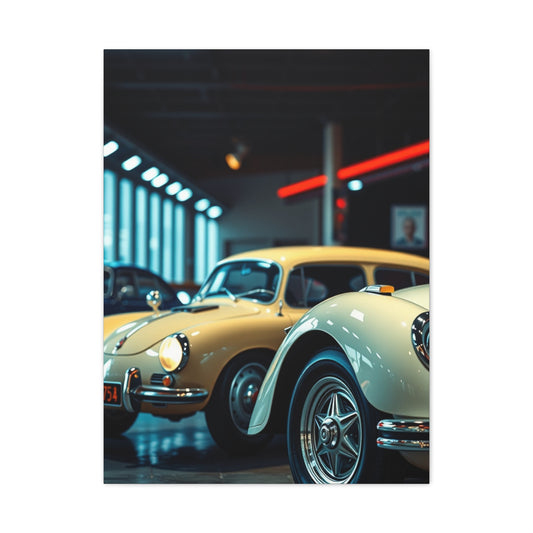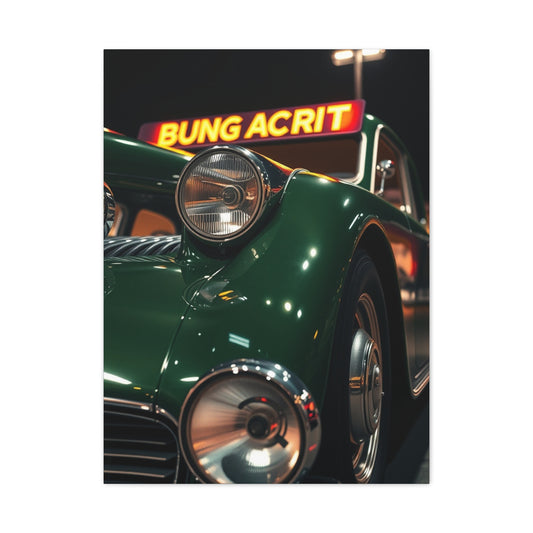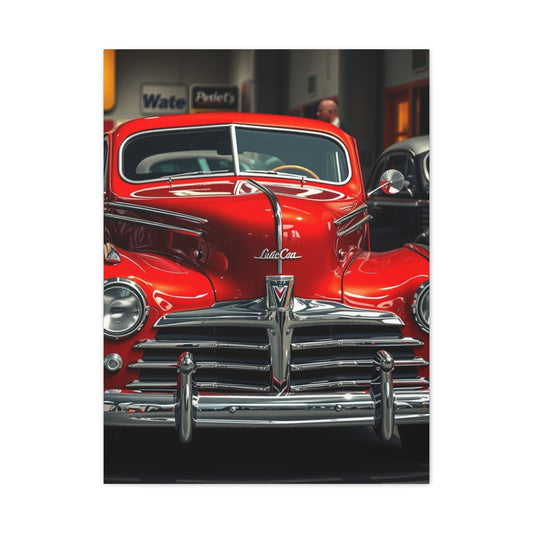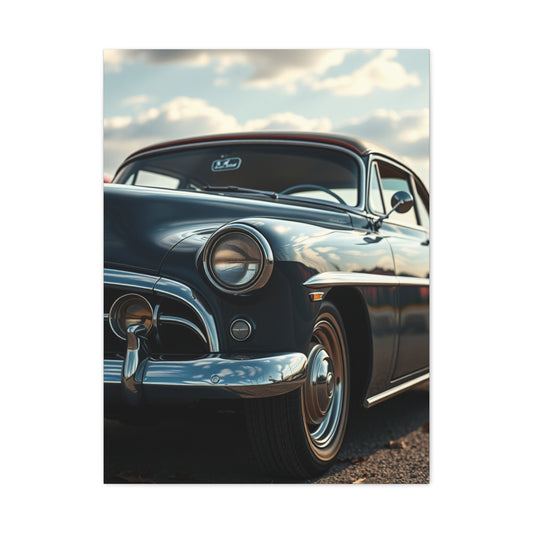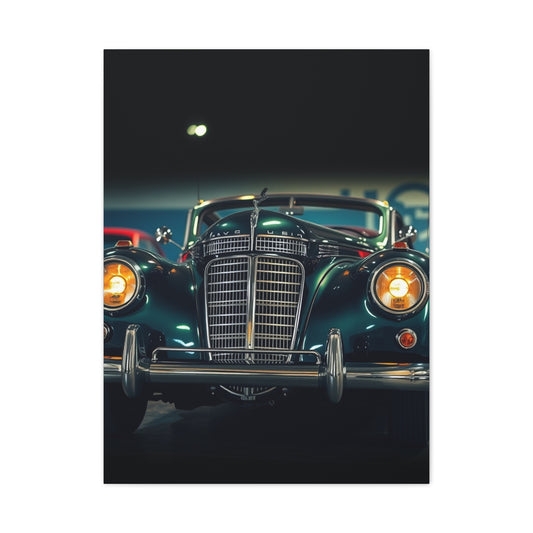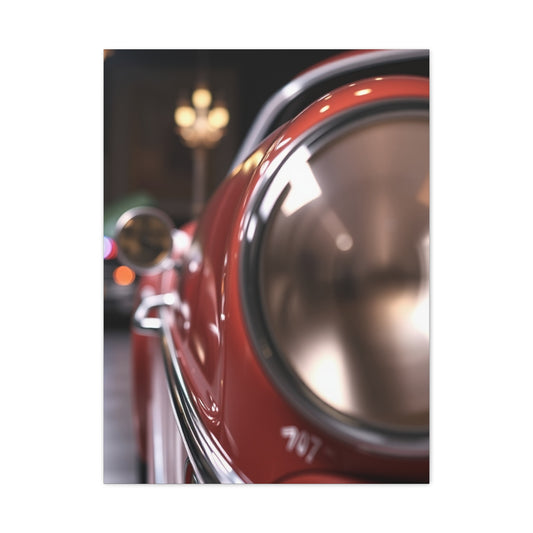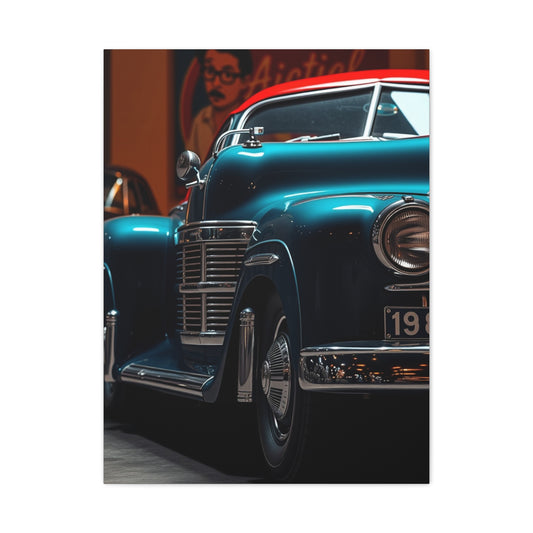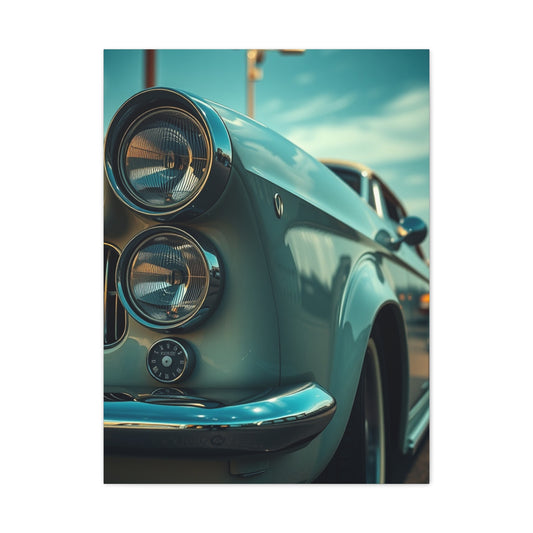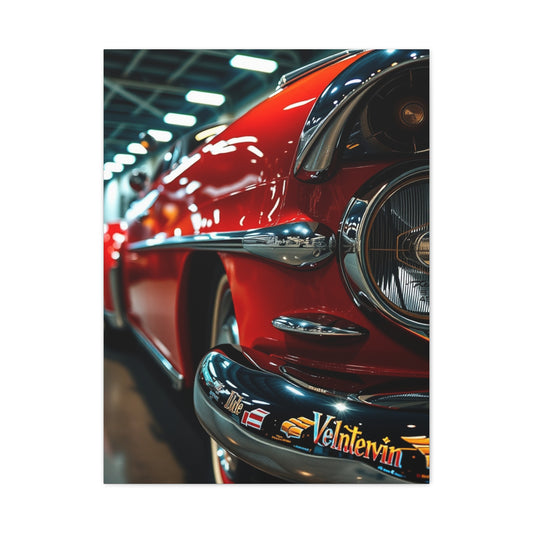Legendary Cars and Automobiles Celebrated in Artistic Wall art Creations
The intersection of automotive design and artistic expression has given rise to some of the most mesmerizing and culturally significant works in contemporary art. When skilled artisans transform mechanical marvels into visual narratives, they create pieces that transcend the traditional boundaries separating industrial design from fine art. Vehicles, including cars, trucks, and motorcycles, are no longer merely functional tools for transportation; they become powerful symbols, canvases, and subjects reflecting technological progress, societal evolution, and cultural identity across different historical periods. Through these interpretations, automobiles emerge as more than machines; they become emblems of creativity, innovation, and human aspiration, capturing both imagination and reality in ways that few other objects can.
The role of automobiles in art extends far beyond mere aesthetic admiration. Artists frequently use vehicles as instruments for commentary on society, culture, and human behavior. Themes of modernization, consumerism, social mobility, and the complex relationship between humans and technology recur across automotive-inspired artworks. By placing vehicles in unexpected contexts, manipulating their forms, or integrating them into sculptural installations, creators compel audiences to reconsider the influence of machines on daily life. Cars in art are no longer simply objects; they are symbols that evoke emotion, provoke thought, and invite reflection on societal norms. Pop art, with its bold colors and repetitive imagery, celebrates automobiles as icons of mass culture and consumer identity, while abstract and conceptual works deconstruct these machines to explore form, texture, and the essence of movement.
In surrealist art, vehicles often take on fantastical or otherworldly qualities. Artists manipulate scale, perspective, and context, transforming familiar automobiles into vessels of imagination or embodiments of unconscious desire. Surrealist works might depict cars floating in impossible landscapes, merging with human figures, or morphing into unexpected forms, creating a dreamlike tension between reality and fantasy. This approach emphasizes the emotional and psychological impact of machines, highlighting not only how technology shapes society but also how it affects human perception, desire, and identity. Through surrealism, vehicles are transformed into narrative devices that tell stories about human imagination, ambition, and the subconscious, prompting viewers to see the automobile as both a physical object and a symbol of inner exploration.
Pop art offers a strikingly different perspective, elevating automobiles to symbols of modernity and cultural aspiration. With its bright colors, graphic lines, and playful repetitions, pop art celebrates cars as icons of progress, wealth, and consumer identity. These artworks often blur the line between commercial design and artistic creation, highlighting the vehicle’s role in popular culture and mass production. Cars in pop art are not just depicted—they are glorified, immortalized, and imbued with a sense of excitement and accessibility, reflecting society’s fascination with speed, technology, and status. By capturing the thrill and aesthetic appeal of automobiles, pop art underscores the broader influence of vehicles on everyday life and collective imagination.
Some artists approach vehicles through abstraction and conceptual design, breaking them down into shapes, lines, and textures that emphasize aesthetic form over function. By isolating curves, angles, and structural components, these works encourage viewers to appreciate the intrinsic beauty of automotive engineering. Conceptual installations, meanwhile, may incorporate real vehicles or parts in thought-provoking ways, using them to explore ideas such as mobility, environmental impact, or industrialization. In this sense, automobiles serve as both subjects and materials, bridging the gap between engineering ingenuity and artistic interpretation. They invite audiences to see machines not only as tools but also as mediums for creative expression, philosophical reflection, and cultural commentary.
Pop Art Celebrations of Automotive Culture
Pop art, by contrast, often celebrates vehicles as icons of modern life. Through vivid colors, repetitive patterns, and graphic imagery, cars are elevated to cultural symbols representing progress, wealth, and consumer identity. In this genre, the automobile becomes a medium for exploring popular culture, advertising, and mass production, highlighting the ways society both shapes and is shaped by technological advancements. Pop art automotive masterpieces often blur the line between commerce and creativity, transforming everyday objects into objects of high aesthetic value.
Abstract and Conceptual Approaches
Abstract and conceptual artists take a different route, deconstructing vehicles into shapes, lines, and textures that emphasize design rather than utility. These interpretations focus on form, movement, and materiality, offering viewers a new appreciation of vehicles as objects of sculptural and artistic significance. By stripping away recognizable features, abstract art emphasizes the interplay between aesthetics and engineering, prompting deeper reflection on the intrinsic beauty of mechanical structures and the creative possibilities inherent in automotive design.
Throughout history, vehicles depicted in art have mirrored societal changes and technological milestones. From early depictions of the automobile as a symbol of status and progress to contemporary installations that critique environmental concerns or urbanization, these works provide a historical lens through which audiences can understand broader cultural shifts. By highlighting both the innovation and the implications of automotive technology, artists contribute to a dialogue about how machines shape human experience, identity, and societal norms.
Automotive Art
The fusion of vehicles and art has left a lasting mark on both the automotive and artistic communities. Designers, engineers, and artists alike draw inspiration from these interdisciplinary works, finding new ways to approach aesthetics, functionality, and cultural storytelling. The impact extends beyond galleries and museums, influencing advertising, product design, and popular culture, while encouraging viewers to see everyday machines as sources of beauty, meaning, and artistic exploration.
The Pop Art Revolution: Warhol's Automotive Transformation
Andy Warhol's fascination with consumer culture found perfect expression through his automotive-themed creations, establishing him as a pioneering figure in elevating commercial products to fine art status. Despite never possessing a driver's license, Warhol developed an extraordinary appreciation for automobile aesthetics and their symbolic representation of American prosperity and technological achievement.
The Mercedes-Benz commission of 1986 represented a watershed moment in automotive art collaboration. This unprecedented partnership between luxury automotive manufacturing and avant-garde artistic expression resulted in an ambitious series comprising paintings, silk-screen prints, and detailed drawings that chronicled the evolution of Mercedes-Benz vehicle design from its earliest incarnations to contemporary models.
Warhol's distinctive approach involved transforming promotional photographs into vibrant, multi-colored compositions using his signature silk-screening techniques. His characteristic bold color palettes and repetitive imagery created dynamic visual narratives that elevated these mechanical subjects beyond their utilitarian purposes. The series demonstrated how mass production techniques could be employed to create unique artistic statements about industrial design and cultural values.
The artistic process itself reflected Warhol's broader philosophy regarding the democratization of art and the blurring of boundaries between high culture and commercial products. By applying fine art techniques to promotional materials, he challenged traditional hierarchies within the art world while simultaneously celebrating the aesthetic qualities inherent in automotive design.
The tragedy of Warhol's unexpected death in 1987 prevented the completion of this ambitious project, leaving only 49 of the planned 80 compositions finished. This incomplete state has contributed to the series' mystique and increased its cultural significance, as each existing piece represents a fragment of a larger artistic vision that will never be fully realized.
The rarity of public exhibitions has enhanced the series' legendary status within both automotive and artistic circles. The complete collection has been displayed publicly only on three occasions: initially in 1988, then again in 2010 and 2014. These limited exhibitions have created intense interest among collectors, scholars, and enthusiasts, establishing the works as coveted treasures within the contemporary art market.
Currently housed within Daimler's Art Collection, these pieces continue to influence contemporary discussions about the relationship between corporate patronage and artistic freedom. The series demonstrates how successful collaborations between commercial enterprises and creative individuals can produce culturally significant works that transcend their original commercial intentions.
The lasting impact of Warhol's automotive series extends beyond individual pieces to influence broader trends in commissioned corporate art. Many companies have subsequently sought to replicate this successful model, commissioning renowned artists to create works that simultaneously serve promotional and cultural purposes while building prestigious art collections that enhance corporate reputations.
Conceptual Concrete: Vostell's Traffic Monument
Wolf Vostell's "Concrete Traffic" represents a radical departure from traditional sculptural approaches, embodying the experimental spirit of 1970s conceptual art while addressing pressing social concerns about urban congestion and environmental degradation. This revolutionary piece challenged conventional notions of sculpture, performance, and public art through its bold integration of industrial materials with automotive symbolism.
The Chicago Museum of Contemporary Art's 1970 commission provided Vostell with an opportunity to create what he termed an "instant happening," emphasizing process over product and public engagement over private contemplation. The artist's decision to encase a complete Cadillac in concrete transformed both the vehicle and the encasement process into equally important components of the final artistic statement.
The public nature of the sculpture's creation added performative dimensions that elevated the work beyond static monument status. Spectators witnessed the gradual transformation of a functional vehicle into an immobilized symbol, experiencing firsthand the artistic process that rendered a symbol of American mobility completely stationary. This temporal aspect created powerful commentary on the paradoxes of modern transportation systems.
The accumulation of parking tickets during the sculpture's initial placement added unintentional humor while reinforcing its critique of bureaucratic systems and urban regulations. These tickets became part of the work's conceptual framework, demonstrating how even artistic statements must navigate practical realities of city life and institutional requirements.
The eventual relocation to the University of Chicago's parking garage created additional layers of meaning, positioning the permanently immobilized vehicle within a space dedicated to temporary automotive storage. This ironic juxtaposition continues to generate contemplation among viewers who encounter the piece during routine parking activities.
Vostell's material choice reflected deeper philosophical considerations about permanence, transformation, and decay in modern society. Concrete, typically associated with construction and progress, becomes an agent of artistic preservation and cultural commentary. The material's associations with urban development and infrastructure create visual connections between the artwork and its broader environmental context.
The piece functions simultaneously as sculpture, social commentary, and conceptual performance, refusing easy categorization within traditional artistic frameworks. This interdisciplinary approach influenced subsequent generations of artists working with automotive subjects and industrial materials, establishing precedents for large-scale installation work that addresses social and environmental concerns.
The work's continued presence in its parking garage location ensures ongoing encounters between art and daily life, fulfilling Vostell's intention to integrate artistic experience with routine activities. Decades after its creation, "Concrete Traffic" continues generating discussions about urban planning, environmental responsibility, and the role of art in addressing social issues.
Kinder's Wall-Breaking Vision
Birgit Kinder's "Trabi" stands as one of the most politically charged and historically significant automotive representations in contemporary public art. Created in 1990 during the immediate aftermath of German reunification, this powerful mural captures a pivotal moment in European history while utilizing automotive symbolism to convey complex political and social transformations.
The artist's selection of the Trabant as the central subject demonstrates sophisticated understanding of the vehicle's symbolic significance within East German culture and its broader representation of socialist industrial production. The Trabant, manufactured exclusively in East Germany, represented both the achievements and limitations of centralized economic systems, making it an ideal symbol for commentary on political change.
The mural's location on a remaining section of the Berlin Wall transforms the artwork into a site-specific installation that derives meaning from its historical context. The visual representation of the Trabant breaking through the wall creates a powerful metaphor for liberation, progress, and the triumph of human determination over political barriers.
Kinder's artistic technique combines realistic automotive representation with dynamic compositional elements that suggest motion, energy, and transformation. The vehicle appears to burst through the concrete barrier with explosive force, surrounded by debris that emphasizes the dramatic nature of the depicted breakthrough. This visual dynamism reflects the rapid pace of political change during the reunification period.
The work's integration into the East Side Gallery, Berlin's longest remaining Wall section turned open-air museum, ensures its continued visibility and cultural relevance. Tourist visitors and local residents regularly encounter the mural, experiencing firsthand its powerful visual impact and historical significance within the broader context of Cold War history and German reunification.
The piece functions as both historical documentation and artistic interpretation, preserving memory of a specific historical moment while offering personal commentary on its significance. Kinder's artistic vision captures not just the physical act of barrier destruction but also the emotional and psychological liberation represented by political reunification.
The mural's enduring popularity demonstrates the effectiveness of combining automotive imagery with historical narrative to create accessible yet sophisticated artistic statements. The work succeeds in communicating complex political concepts through immediately recognizable visual symbols that resonate with diverse audiences regardless of their historical knowledge or artistic background.
The Trabant's transformation from functional vehicle to artistic symbol illustrates how objects can acquire new meanings through creative recontextualization. Kinder's treatment elevates this modest automobile to represent broader themes of freedom, unity, and social progress, demonstrating art's power to transform everyday objects into powerful cultural symbols.
The work continues influencing contemporary artists working with automotive subjects and historical themes, establishing precedents for using vehicle imagery to address political topics and social transformation. Its success demonstrates how effective public art can simultaneously serve educational, commemorative, and aesthetic functions within urban environments.
Surrealist Automotive Dreams
Salvador Dali's incorporation of automobiles into his surrealist compositions represents some of the most imaginative and psychologically complex treatments of automotive subjects in fine art history. Despite rarely driving himself, Dali recognized vehicles as powerful symbols of modernity, transformation, and unconscious desires that perfectly suited his explorations of dream logic and psychological symbolism.
The "Clothed Automobiles" series demonstrates Dali's ability to transform familiar objects through unexpected juxtapositions and material associations. By draping luxury Cadillacs in fine fabrics, he created surreal hybrids that challenge conventional understanding of both automotive function and textile purpose. These collages suggest themes of protection, concealment, and the anthropomorphization of mechanical objects.
The fabric coverings transform the vehicles into mysterious, almost organic forms that blur boundaries between manufactured products and living beings. This transformation reflects Dali's broader artistic interest in metamorphosis and his belief that objects could acquire psychological significance through creative manipulation and recontextualization within artistic frameworks.
"Rainy Taxi" represents perhaps Dali's most elaborate automotive installation, combining multiple surrealist techniques to create a complex multi-sensory experience. The placement of mannequins within the vehicle creates human presence while simultaneously emphasizing artificial construction, reflecting surrealist fascination with the relationship between reality and representation.
The addition of lettuce, chicory, and snails introduces organic decay into the mechanical environment, creating powerful commentary on the relationship between natural and artificial systems. These biological elements suggest themes of decomposition, fertility, and the persistence of natural processes within technological contexts.
The internal rain system transforms the vehicle's interior into an artificial weather environment, creating impossible conditions that exist only within artistic imagination. This meteorological manipulation demonstrates Dali's interest in controlling natural phenomena through technological means while creating dreamlike scenarios that defy logical explanation.
The bronze hood ornament replacement further emphasizes the work's concerns with transformation and substitution, replacing functional automotive components with artistic elements that serve purely symbolic purposes. This substitution reflects broader surrealist interests in disrupting normal object relationships and creating new associative possibilities.
Dali's cauliflower-filled Rolls Royce journey to deliver his Sorbonne lecture represents performance art avant la lettre, transforming routine transportation into artistic statement. This action demonstrates his commitment to integrating artistic vision with daily activities, refusing to separate creative expression from practical necessity.
The Thompson Twins' musical tribute "Salvador Dali's Car" indicates the broader cultural impact of Dali's automotive work, inspiring creative responses across different artistic mediums. This cross-disciplinary influence demonstrates how successful artistic innovations can generate creative responses that extend far beyond their original context and medium.
Dali's articulated understanding of automobiles as symbols of modernization and progress provides theoretical foundation for his creative manipulations. His conscious recognition of vehicles' symbolic significance allows for deliberate artistic interventions that comment on broader cultural themes while creating visually striking compositions.
Collaborative Canvas: The BMW Art Car Legacy
The BMW Art Car program represents one of the most successful and enduring collaborations between automotive manufacturing and contemporary artistic practice. Since its establishment in 1975, this initiative has transformed functional vehicles into mobile galleries that challenge traditional boundaries between commercial product design and fine art expression.
The program's origins trace to French racing driver and art enthusiast Hervé Poulain, who commissioned Alexander Calder to create the first BMW Art Car for the 1975 Le Mans race. This initial collaboration established precedents for combining artistic vision with automotive performance, creating vehicles that function simultaneously as racing machines and artistic statements.
The selection of internationally recognized artists for subsequent vehicles has ensured the program's continued cultural relevance and artistic credibility. Participants have included Andy Warhol, Roy Lichtenstein, Frank Stella, Robert Rauschenberg, and David Hockney, among others, representing diverse artistic movements and approaches to vehicle decoration and transformation.
Each artist's unique interpretation of the vehicle canvas has resulted in dramatically different aesthetic approaches and conceptual frameworks. Some focus on color and pattern, others incorporate textual elements or sculptural additions, while still others completely reimagine the vehicle's visual identity through radical surface treatments and material applications.
The program's combination of high-performance automotive engineering with cutting-edge artistic vision creates unique objects that appeal to both automotive enthusiasts and art collectors. These dual-purpose vehicles serve as functional racing machines while maintaining their status as valuable artistic creations worthy of museum exhibition and scholarly analysis.
The recent pause in the program followed by its enthusiastic 2024 revival with two simultaneous commissions demonstrates continued institutional commitment to this unique collaborative model. The selection of Julie Mehrutu and the return of Esther Mahlangu represents both continuity with established traditions and openness to new artistic voices and approaches.
Mehrutu's M Hybrid V8 incorporates virtual reality elements that reflect contemporary technological capabilities while maintaining connection to traditional artistic practices. This technological integration suggests future directions for the program that might further blur boundaries between digital and physical artistic expression.
Mahlangu's return to the program after her groundbreaking 1992 contribution demonstrates the lasting value of successful artistic collaborations. Her new i5 Flow Nostokana incorporates electronic panels displaying animations, representing significant technological advancement in vehicle-based artistic display capabilities.
The program's influence extends beyond individual vehicle creations to impact broader discussions about corporate cultural patronage and the role of commercial enterprises in supporting contemporary artistic practice. BMW's consistent commitment provides a model for other companies seeking to develop meaningful relationships with creative communities.
The global exhibition of BMW Art Cars in museums and galleries has elevated these vehicles beyond their automotive origins to establish them as legitimate artistic objects worthy of serious scholarly attention and cultural preservation. This institutional recognition validates the program's artistic ambitions while ensuring the works' continued accessibility to diverse audiences.
Futurist Motion
Giacomo Balla's revolutionary approach to representing automotive motion established new possibilities for abstract artistic expression while reflecting early 20th-century enthusiasm for technological progress and mechanical innovation. His dynamic compositions captured not just the physical appearance of vehicles but their essential qualities of speed, power, and modern efficiency.
The influence of Futurist founder Filippo Tommaso Marinetti shaped Balla's understanding of automobiles as symbols of contemporary life and technological advancement. This philosophical framework provided theoretical justification for his radical departure from traditional realistic representation toward abstract exploration of movement, energy, and temporal progression.
Balla's artistic development from conventional late 19th-century painting toward abstract experimentation parallels broader cultural shifts in European society during the early 1900s. His transformation reflects growing awareness of technological capabilities and their potential to reshape human experience and artistic expression.
The artist's focus on visual representation of movement rather than static appearance demonstrated innovative approaches to temporal representation in two-dimensional media. His paintings attempt to capture qualities that exist in time rather than space, creating visual equivalents for sensory experiences that traditionally resist pictorial representation.
"Ritmo + rumore + velocità d'automobile" (Rhythm + noise + car speed) exemplifies Balla's multi-sensory approach to automotive representation, suggesting not only visual aspects but also auditory and kinesthetic elements associated with vehicular motion. This synesthetic quality reflects Futurist interest in total artistic experiences that engage multiple sensory modalities.
"Velocity of Cars and Light" demonstrates Balla's sophisticated understanding of relationships between mechanical motion and natural phenomena, exploring how technological objects interact with environmental elements like illumination and atmospheric conditions. These studies contribute to broader Futurist investigations of technology's integration with natural systems.
The ironic historical positioning of Futurist art as documentation of past rather than future reflects the rapid pace of technological change and cultural transformation during the 20th century. Works created to celebrate cutting-edge innovation now serve as historical records of earlier developmental stages in automotive and artistic evolution.
The movement's political associations with Italian Fascism complicate contemporary interpretation of Futurist automotive art, requiring careful consideration of ideological contexts that influenced artistic production and reception during different historical periods. These political connections demonstrate how artistic movements can become entangled with broader social and political developments.
Marinetti's early membership in the Fascist Party and his influence on Balla's artistic development illustrate complex relationships between artistic innovation and political ideology. These connections require nuanced analysis that acknowledges both artistic achievements and problematic political associations without diminishing the works' cultural significance.
Mussolini's recognition of art's propagandistic potential while maintaining personal disinterest in aesthetic quality demonstrates cynical approaches to cultural patronage that prioritize political utility over artistic merit. This instrumentalization of creative expression provides important context for understanding Futurist art production during the Fascist period.
The movement's value to contemporary art historians extends beyond aesthetic appreciation to include documentation of cultural attitudes, technological optimism, and political ideology during crucial periods of European social transformation. These works serve as primary sources for understanding how artistic communities responded to rapid technological and political change.
Pop Culture Emotion
Roy Lichtenstein's "In the car" represents sophisticated integration of automotive imagery with psychological exploration, utilizing the enclosed vehicle space to examine human emotional experience and interpersonal relationships. This masterful 1963 composition demonstrates how automobile interiors can serve as intimate settings for complex emotional narratives.
The artist's decision to reproduce a panel from "Girls' Romances" comic reflects his broader interest in popular culture imagery and its potential for artistic transformation. By elevating commercial illustration to fine art status, Lichtenstein challenged traditional hierarchies within the art world while exploring how mass media representations shape cultural understanding of romance and relationships.
The deliberate omission of the original comic's caption creates interpretive ambiguity that invites viewers to develop personal narratives based on visual evidence alone. This editorial decision transforms specific narrative content into universal emotional exploration, allowing diverse audiences to project their own experiences onto the depicted scenario.
Lichtenstein's characteristic Ben-Day dot technique and bold color palette create visual connections to mass reproduction processes while maintaining fine art credibility. This technical approach reflects his interest in examining relationships between original artistic creation and mechanical reproduction in contemporary media environments.
The vehicle interior's confining spatial qualities enhance the emotional intensity of the depicted interaction, creating intimate psychological space that contrasts with the external mobility typically associated with automotive experience. This spatial tension adds complexity to the work's exploration of personal relationships and individual autonomy.
The passengers' facial expressions carry the entire narrative weight of the composition, demonstrating Lichtenstein's confidence in visual communication and his understanding of how subtle artistic choices can convey complex emotional states. The male and female figures' contrasting expressions suggest relationship dynamics without requiring explanatory text or context.
The work's record-breaking $16.2 million sale price in 2005 reflected both Lichtenstein's market standing and the composition's iconic status within his artistic output. This commercial success demonstrates how works combining automotive imagery with universal themes can achieve both critical acclaim and significant financial value.
The subsequent sale of "Masterpiece" for $165 million in 2017, while eclipsing "In the car's" financial record, validates the earlier work's importance within Lichtenstein's career development and its contribution to his artistic reputation. The comparison illustrates how artistic careers develop through accumulated achievements rather than individual breakthrough moments.
The painting's continued recognition as one of Lichtenstein's most iconic works demonstrates its successful integration of popular imagery with sophisticated artistic technique. This enduring appeal reflects the composition's ability to communicate universal themes through specifically American cultural references and automotive symbolism.
The work's influence on subsequent pop artists working with automotive subjects establishes its significance within broader art historical narratives about the integration of commercial culture with fine art practice. Lichtenstein's success with automotive imagery encouraged other artists to explore similar subjects and themes.
Artistic Elements in Modern Vehicle Design
The evolution of luxury automotive design increasingly incorporates artistic principles and aesthetic considerations that reflect broader cultural appreciation for vehicles as sculptural objects and mobile art galleries. Contemporary luxury manufacturers recognize that their customers seek more than functional transportation, demanding vehicles that provide complete sensory experiences worthy of aesthetic contemplation.
Interior design elements in premium vehicles now receive attention traditionally reserved for residential and commercial architectural projects, with designers considering color relationships, material harmonies, spatial proportions, and lighting effects that create emotionally engaging environments for passengers and drivers.
The selection of materials demonstrates commitment to tactile quality and visual sophistication that rivals fine furniture and interior design. Exotic leathers, rare woods, precious metals, and innovative textiles combine to create environments that stimulate multiple senses while maintaining practical functionality required for transportation applications.
Collaborative relationships between automotive manufacturers and established artists continue expanding, creating limited edition vehicles and special collections that blur boundaries between transportation and collectible art objects. These partnerships demonstrate growing recognition of vehicles' potential to serve as artistic canvases and cultural statements.
Technology integration in luxury vehicles increasingly emphasizes aesthetic as well as functional considerations, with display systems, lighting arrays, and control interfaces designed to enhance visual appeal while maintaining operational efficiency. These technological elements become integral components of overall design compositions rather than merely functional additions.
The attention to detail in luxury vehicle production parallels fine art creation processes, with skilled craftspeople dedicating extensive time and expertise to perfecting individual components and overall compositions. This artisanal approach distinguishes premium products from mass market alternatives while creating emotional connections between owners and their vehicles.
Sound design in luxury automobiles involves acoustic engineering that approaches musical composition, creating audio environments that enhance driving experiences while reflecting brand identity and aesthetic philosophy. These sonic landscapes contribute to overall sensory experiences that transform routine transportation into artistic encounters.
The development of sustainable luxury materials demonstrates how environmental consciousness can integrate with aesthetic sophistication, creating new categories of beautiful and responsible design solutions that appeal to environmentally aware consumers seeking luxury without environmental compromise.
Customization programs offered by luxury manufacturers allow customers to participate in artistic creation processes, selecting colors, materials, and details that reflect personal aesthetic preferences while working within established design frameworks. This collaborative approach creates unique vehicles that serve as personal artistic statements.
The exhibition of luxury vehicles in museums and galleries validates their status as cultural artifacts worthy of preservation and scholarly study, establishing precedents for treating automotive design as legitimate artistic practice deserving critical analysis and historical documentation.
Cultural Impact and Artistic Legacy
The integration of automotive subjects into fine art has fundamentally altered both industries, creating new categories of cultural production that challenge traditional boundaries between commercial design and artistic expression. These collaborations demonstrate how technological objects can transcend their utilitarian origins to become symbols of cultural values and artistic innovation.
The influence of automotive art extends beyond individual works to shape broader cultural conversations about technology's role in human experience, the relationship between art and commerce, and the potential for creative expression within industrial contexts. These discussions contribute to evolving definitions of art and its social functions.
Educational institutions increasingly recognize automotive design as legitimate subject for serious academic study, incorporating vehicle history, design principles, and cultural significance into curricula that prepare students for careers spanning traditional boundaries between art, design, engineering, and cultural studies.
Museum collections worldwide now include significant automotive artworks and design objects, reflecting institutional recognition of vehicles' cultural importance and artistic merit. These acquisitions demonstrate how cultural institutions adapt to include new forms of artistic expression while maintaining traditional collecting and preservation standards.
The economic impact of automotive art markets creates new investment categories and collecting opportunities that attract diverse participants from both traditional art and automotive communities. This market development establishes financial incentives for continued artistic innovation and collaboration between manufacturers and artists.
International exhibitions featuring automotive art provide platforms for cross-cultural exchange and comparative analysis of how different societies integrate technological objects into artistic practice. These events facilitate global conversations about modernization, cultural identity, and artistic expression across national and cultural boundaries.
The documentation and preservation of automotive art requires specialized knowledge and techniques that combine traditional art conservation methods with understanding of mechanical systems and industrial materials. This technical complexity creates new professional specializations within museum and conservation fields.
Critical scholarship examining automotive art contributes to broader academic discussions about material culture, design history, and the relationship between aesthetic experience and technological development. These studies provide theoretical frameworks for understanding how artistic practice responds to and shapes technological change.
The influence of automotive art on contemporary design practice extends beyond vehicle styling to impact architecture, product design, and other creative fields where movement, technology, and aesthetic expression intersect. These cross-disciplinary influences demonstrate art's capacity to generate innovation across multiple creative domains.
Future developments in automotive art will likely incorporate emerging technologies such as artificial intelligence, augmented reality, and sustainable materials, creating new possibilities for artistic expression while addressing contemporary social and environmental concerns through creative practice.
Conclusion:
The remarkable journey through these seven iconic automotive artworks reveals the profound and enduring relationship between mechanical innovation and creative expression that continues to evolve and inspire new generations of artists, designers, and cultural critics. From Warhol's silk-screened celebrations of consumer culture to Dali's surrealist transformations, from Vostell's concrete manifestos to contemporary BMW collaborations, each work demonstrates unique approaches to understanding and representing the complex role of automobiles in modern society.
These artistic achievements transcend mere aesthetic appreciation to provide sophisticated commentary on technological progress, social transformation, cultural identity, and human relationships with manufactured objects that shape daily experience. The artists' diverse approaches—whether through pop art celebration, surrealist manipulation, conceptual installation, or abstract representation—collectively demonstrate art's capacity to transform utilitarian objects into powerful symbols that communicate complex ideas about contemporary life.
The evolution from early 20th-century Futurist enthusiasm for mechanical speed and power to contemporary concerns about environmental sustainability and digital integration reflects broader cultural shifts while maintaining consistent recognition of vehicles as significant cultural artifacts worthy of serious artistic attention. This historical continuity suggests that automotive art will continue developing as both technology and artistic practice evolve to address emerging social needs and aesthetic possibilities.
The success of collaborative programs like BMW Art Cars demonstrates how partnerships between commercial enterprises and creative communities can produce culturally valuable works that serve multiple constituencies while challenging traditional boundaries between art and commerce. These collaborations provide models for future partnerships that might address contemporary challenges while creating new forms of cultural expression.
The institutional recognition accorded to automotive art through museum exhibitions, academic study, and critical scholarship validates the cultural significance of these works while ensuring their preservation for future generations. This legitimization process reflects broader acceptance of design objects and commercial collaborations as worthy subjects for serious cultural analysis and artistic practice.
The global nature of automotive art, spanning from Berlin's political murals to American pop art celebrations to international racing collaborations, demonstrates how vehicle imagery provides universal language for discussing shared experiences of modernization, technological change, and cultural transformation across national and cultural boundaries.The technical innovations required to create and preserve automotive artworks contribute to broader developments in conservation science, exhibition design, and critical methodology that benefit entire museum and academic communities.
These practical advances ensure that future scholars and audiences will have access to these important cultural artifacts.The market development surrounding automotive art creates new economic opportunities for artists, collectors, and cultural institutions while demonstrating public appetite for works that combine aesthetic sophistication with accessible subject matter. This commercial success provides financial foundation for continued artistic innovation and experimentation.

